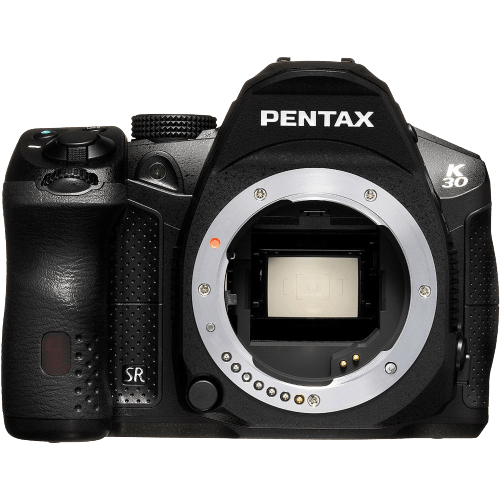Pentax K-30 Specs and Scores

The Pentax K-30 receives a score of 56/100 for its general specifications. Launched in 2012 with a price tag of $470, this DSLR camera measures 130 x 97 x 71mm and weighs 1.43lbs (650g). Although it has been almost a decade since its release, the K-30 still holds up decently in today’s competitive market. With its compact size and moderate weight, this camera is a solid choice for those seeking a user-friendly DSLR experience.
Pentax K-30 Overview and Optics
The Pentax K-30 receives a score of 60/100 for its optics. This camera features 16.3 megapixels, a shooting speed of 6, a CMOS sensor type, and a Prime M processor. With a DXOMARK score of 79 for its sensor, the K-30 is equipped with an APS-C sensor size, a Pentax KAF lens mount, image stabilisation, and a 3:2 aspect ratio.
Comparing the K-30’s optics to other cameras in today’s market, it has decent specifications. However, it falls short in certain aspects, such as megapixels and shooting speed. Many modern cameras boast higher megapixels and faster shooting speeds, offering better image quality and performance. Nonetheless, the K-30’s image stabilisation and lens mount compatibility with a wide range of Pentax lenses are noteworthy features.
While the Pentax K-30 may not be the top choice for photographers seeking cutting-edge optics, it remains a reliable and versatile option for those who value the Pentax lens ecosystem and require image stabilisation.
Pentax K-30 Video Performance
The Pentax K-30 has a video score of 57 out of 100. Its video capabilities include a maximum resolution of Full HD (1920 x 1080) and a maximum frame rate of 30fps. Additionally, the camera has built-in time-lapse functionality.
Despite these features, the Pentax K-30 falls short in comparison to the video capabilities of other cameras in today’s market. Many modern cameras offer 4K resolution, higher frame rates, and more advanced video features. However, the K-30’s Full HD resolution and 30fps frame rate are still suitable for casual videographers and hobbyists.
While the Pentax K-30 may not be the top choice for professional video production, it remains a reliable option for users seeking a camera with decent video capabilities and additional features such as time-lapse functionality.
Pentax K-30 Features and Benefits
The Pentax K-30 features a score of 54/100, reflecting its specifications in comparison to other cameras in the market. With a 3-inch screen size and a resolution of 921,000 dots, the display provides decent quality for users. However, the lack of a touchscreen, flip screen, GPS, WIFI, and Bluetooth capabilities might make the K-30 seem outdated compared to more recent camera models.
Despite these shortcomings, the Pentax K-30 still offers reliable performance and quality for photography enthusiasts. The camera’s specifications may not be the most advanced, but they are sufficient for users who prioritize function over cutting-edge technology. The K-30 remains a viable option for those seeking a dependable camera without the need for the latest features.
Pentax K-30 Storage and Battery
The Pentax K-30 storage and battery score is 24/100. This camera has one memory card slot, supporting SD, SDHC, and SDXC cards. In the current market, many cameras offer dual memory card slots for more storage options and backup. The battery life of the K-30 is 410 shots, which is below average compared to other cameras in its class. The camera uses a D-LI109 battery type and does not support USB charging, limiting the charging options for users.
Considering the storage and battery specifications, the Pentax K-30 falls short in today’s competitive camera market. The limited memory card slots and below-average battery life make it less appealing to potential buyers seeking convenience and reliability.
